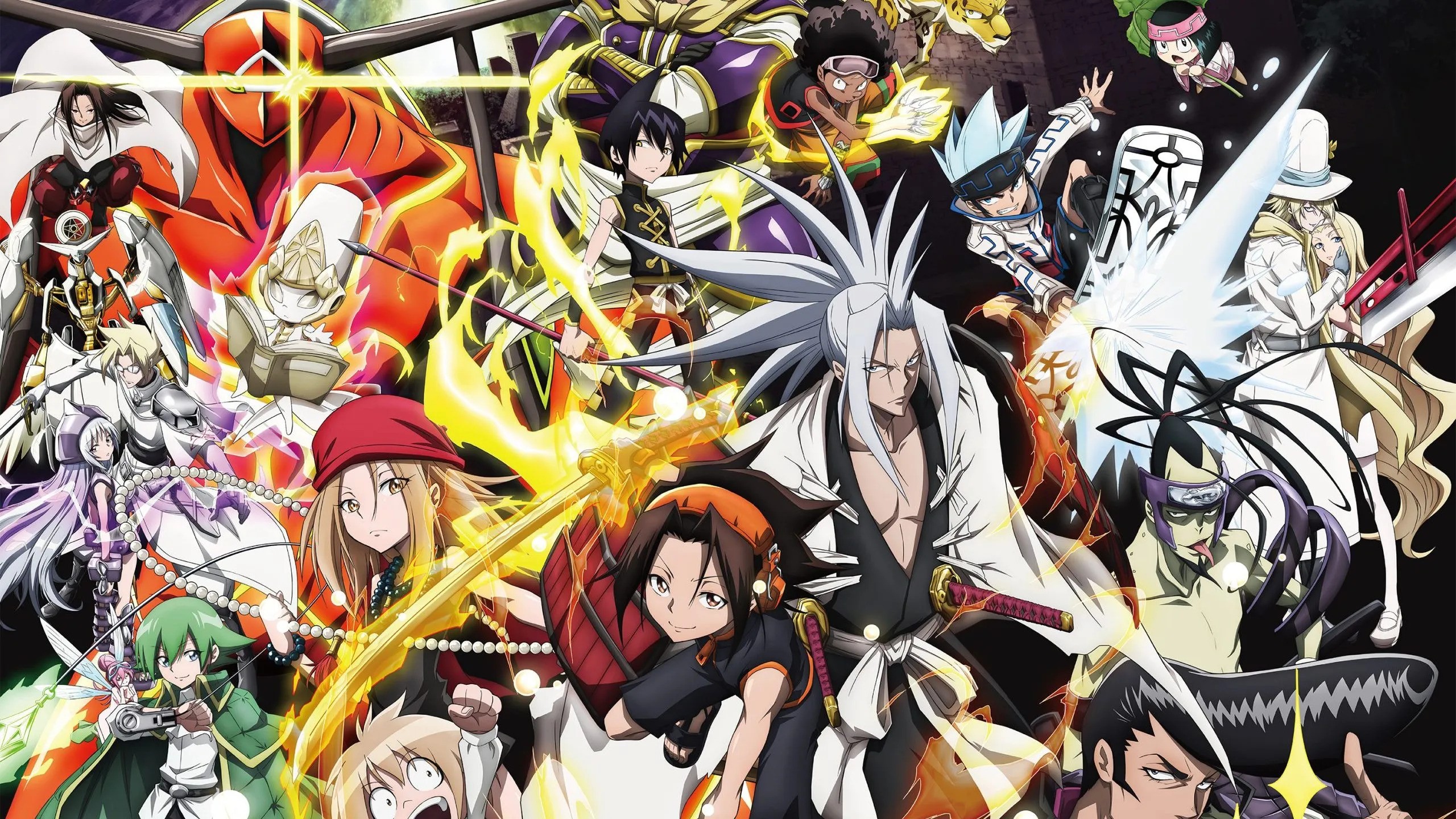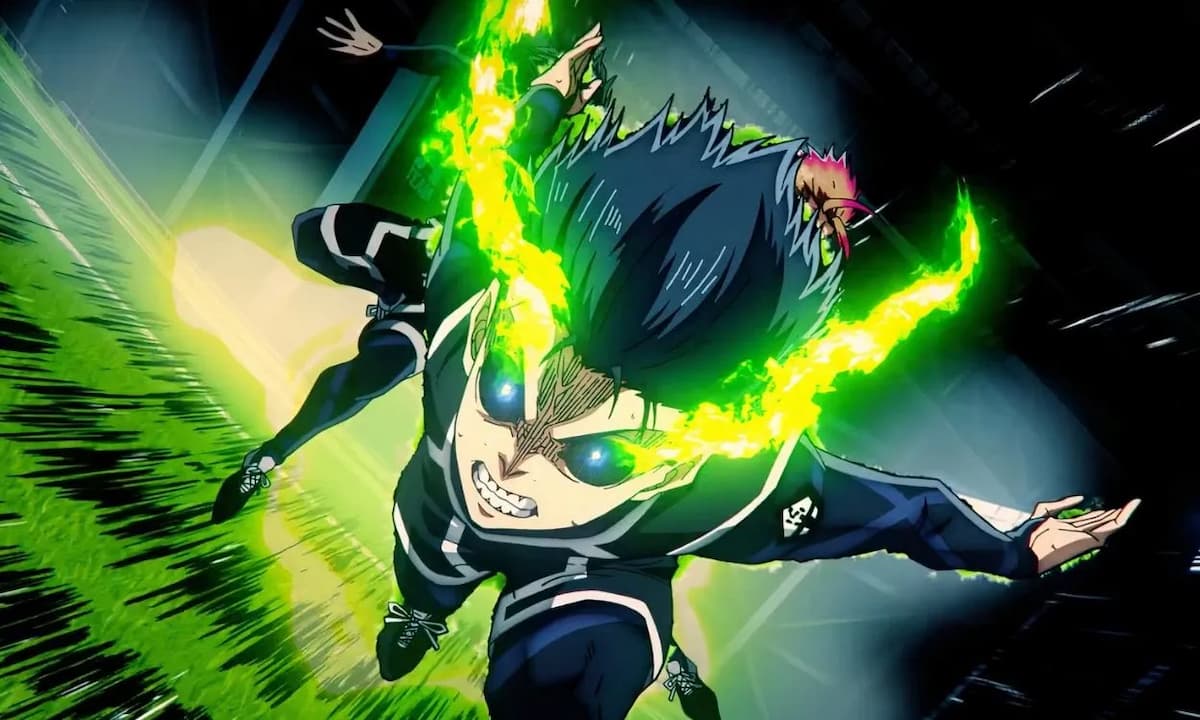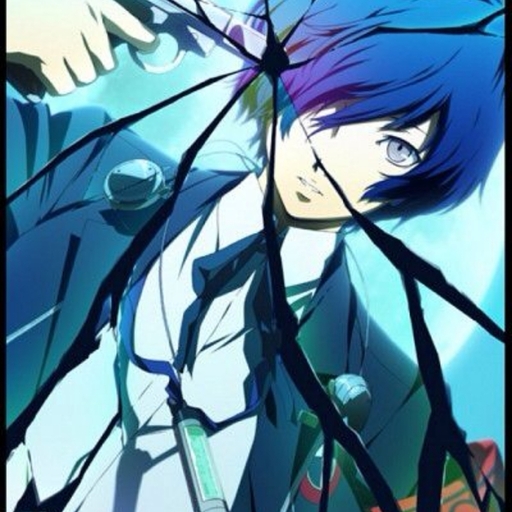If you’re a fan of Shonen Jump or anime from that time, there’s a chance you’ve heard of Shaman King at one point or another.
In an era dominated by long-running action series, Shaman King, at first glance, appears to be yet another Shonen anime that was simply never able to find an audience in the West. It received consistent support from Shonen Jump’s parent company Shueisha for years and got a modest number of spin-offs, including an anime series, multiple video games, and even a trading card game. Yet, despite predating more popular titles like Naruto and Bleach, Shaman King is remembered as little more than a footnote. Sure, the series has had a resurgence in popularity in the past couple of years (including a new sequel anime, Shaman King: Flowers, which streams on Netflix this year), but it hardly inspires a response from otaku nowadays.
I’ve always been fascinated by the existence of Shaman King. Not just because of how it seemed to drop off the face of the Earth for a decade, but because the story itself subverts basically every trope you would expect from a Shonen series. The tone and journey our heroes take to reach the end is unusual, to say the least. Even thinking back on some of the major plot beats, it’s striking how blunt the series is with its endgame and the path it takes to get there, as well as how frustrating that journey is to watch unfold. It’s a complicated series in more ways than one. Now that it’s concluded and easier to get into than ever, I think it’s something that any fan of quality Shonen series should experience.

In the world of Shaman King, some people (known as Shamans) are able to commune with the dead. These shamans can channel these spirits either through themselves or through objects and, by combining these spirits with the shaman’s latent powers, create unique constructs and abilities. One such shaman is Yoh Asakura, who channels and becomes friends with a fearsome samurai named Amidamaru. At first, you think the series will focus on Yoh’s exploits throughout Japan, dealing with a variety of ghosts and shamans along the way. Very quickly, however, we realize that it’s all a prologue to the Shaman Fight. What is the Shaman Fight you may ask? The ultimate tournament arc.
From the fourth volume through to the very end, all Shaman King appears to be interested in is the tournament. The winner will become the new Shaman King, effectively able to channel God, so the series goes all in on exploring plenty of theological concepts. In Shaman King, all religions are correct, as each religion is more or less a reflection of the Great Spirit, or God. There are archangels, Babylonian deities, Meso-American demigods, Egyptian gods, and many more all vying for representation in the series. This allows Shaman King to offer a global perspective on religion and other cultures — including ones that are rarely portrayed in media.
Multiculturalism is one of Shaman King’s biggest strengths. Despite being a Japanese series created by a Japanese author, Hiroyuki Takei, the series feels like a globe-trotting adventure. There are plenty of organizations that Yoh and his friends come into conflict with that have members from all around the globe. The same is true of many allies Yoh makes as well. Some are from England, others are from the Middle East, and one of the most prominent supporting characters later in the manga is from a small village in Africa. These locations help to inform the viewer not only about who the characters are but also some of the spiritual beliefs of their home country, painting a picture of how spirituality differs across the planet. It’s a fascinating read since many of these elements appear to be well-researched and are based on actual indigenous cultures.

But I think by far the most fascinating thing about the manga is how Shaman King subverts the tournament arc trope. Tournament arcs are one of the defining elements of a Shonen series. You name a Shonen series and there’s a very good chance it has some kind of a tournament arc. The reason these arcs are prominent into Shonen manga is pretty obvious: most are predicated around action, so why not create a situation where combat is the main driving force? If the story is to progress, then our characters need to get into more fights, with the author allowing each enemy to shine for a brief moment before fading from the spotlight in favor of the overarching antagonist. And Shaman King completely disregards this.
In Shaman King, almost immediately after the Shaman Fight begins, in a stunningly brazen move, Hiroyuki Takei outright states who the winner will be. That is Hao Asakura, a Shaman who continuously reincarnates with the singular goal of becoming Shaman King. Everyone knows he’s going to win, so most of the manga becomes a futile attempt to either stop him or discover a way to delay his ascension to godhood. He has a loyal group of followers who, despite being defeated at points in the tournament, never fade away from the spotlight. They stay around and cause legitimate chaos for our heroes, doing everything in their power to ensure Hao’s inevitable victory. As you read or watch Shaman King, you slowly stop caring about the frivolity of the Shonen action and instead begin to care about the narrative at large. It’s a fascinating plot progression that keeps viewers engaged despite abandoning its action.
Yet that may be where Shaman King begins to falter. Once we reach the Shaman Fight and the traditional tournament structure, as well as when Takei reveals the series’ endgame, fan interest in the series began to waver. That makes sense. Once you reveal to your audience what the conclusion will be and firmly state both in and outside of the text that it’s not going to change, readers are bound to lose interest. Not only that, but the Shonen elements that were so prominent earlier in the manga were replaced by deep, contemplative pieces that mused about the futility of violence. In other words, the stuff that people liked about the early days of the series was dropped almost entirely, annoying a large number of fans.

The reception was so bad that the series was discontinued in Shonen Jump in 2004 before getting a proper conclusion. Shueisha said that interest in the series dropped so much that they would only print the final volume if there were at least 50,000 people who would buy it in Japan, which is unheard of today. Hiroyuki Takei then took five years to finish the final three volumes, blaming that lengthy process on a combination of trying to do justice to the series in giving it the ending it deserved and also a loss of motivation on Takei’s part after readers rejected his intended direction to instead clamor for generic Shonen tropes.
In my own experience, I only was able to read the finale of Shaman King in the early 2010s solely due to fan translations, as Westerners wouldn’t get an official localization until only a few years ago thanks to Kodansha. Given that Shueisha wasn’t going to do anything with the series after it floundered in the West and in Japan alike, manga publisher Kodansha acquired the rights to Shaman King in 2018. The company immediately began to celebrate the series on the eve of its 20th anniversary with a new and complete rerelease of the manga. It released digital versions of all 35 volumes, including the ending the West never got, and published omnibus editions of the series throughout the early 2020s.
But Shaman King wasn’t just a manga now, was it? No, Shaman King had two anime adaptations, both of which were severely flawed in their own ways. The first adaptation began airing in 2001 and, given that the series was still being written at this time, it featured an original ending. In fact, most of the anime had original plots and episodes, making it a weird adaptation that ignored a lot of themes from the source material. Then again, Shueisha took more direct control of the anime towards the end of its run and implemented more Shonen tropes, just as fans allegedly wanted. Meanwhile, when this series came to the West, 4Kids Entertainment picked up the rights — a company infamous for censorship and “Americanization” of anime they acquired — and aired it on the forgotten Saturday morning cartoon block, the FoxBox.

In 2021, a new anime production was announced, one that claimed it would faithfully adapt all 35 volumes of the manga and deliver an authentic adaptation. The problem was that trying to adapt a manga as long as Shaman King into 52 episodes was an almost impossible task, so a lot of the series had to be cut or reduced heavily. For example, the first three volumes are handled in four episodes and the pacing is so absurdly rushed that key moments don’t have time to land or impact the viewer before we’re rushed to the next big setpiece.
It feels like no matter what, Shaman King can’t catch a break. Whether it be the delayed manga, the cliffhanger ending Westerners had to deal with for over a decade, or two middling anime adaptations, Shaman King just has the worst luck. Shaman King is a subversion of what a Shonen action series can be, one that becomes more confident in its voice as it progresses. It’s a series about multiculturalism and spiritualism, hitting topics and themes that other Shonen series just don’t want to tackle. I appreciate Shaman King for the risks that it took, and I applaud Hiroyuki Takei for staying true to his vision despite how that negatively affected readership. Since we’re just beginning the new year, if you’re looking for a new series to get into, I’d highly recommend giving Shaman King a whirl. It may not immediately impress you out of the gate, but give it time and you’ll discover something fairly unique and compelling.
This article is part of Frame Jump, a column from Jesse Lab looking at anime and other media from Japan. You can read more of his wonderful work here.






Published: Jan 18, 2024 05:00 pm